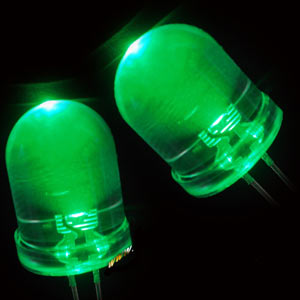High-performance, low-cost green LEDs to brighten up the future
 Washington, September 6 : A scientist is aiming to develop a high-performance, low-cost green LED (Light-emitting diode).
Washington, September 6 : A scientist is aiming to develop a high-performance, low-cost green LED (Light-emitting diode).
According to Christian Wetzel, professor of physics and the Wellfleet Professor of Future Chips at Rensselaer Polytechnic Institute (RPI), "Going green means different things to different people. For companies, going green means making a profit by selling equipment and services that allow one''s customers to be more efficient and reduce costs."
"I''m doing both of those, but I''m also trying to make an LED that literally shines green light," he said.
First discovered in the 1920s, LEDs are semiconductors that convert electricity into light.
When switched on, swarms of electrons pass through the semiconductor material and fall from an area with surplus electrons into an area with a shortage of electrons.
As they fall, the electrons jump to a lower orbital and release small amounts of energy. This energy is realized as photons - the most basic unit of light.
Unlike conventional light bulbs, LEDs produce almost no heat.
The color of light produced by LEDs depends on the type of semiconductor material it contains.
"We have high-performance red LEDs, we have high-performance blue LEDs, and if we paired them with a high-performance green LED we would be able to produce every color visible to the human eye - including true white," said Wetzel.
"Every computer monitor and television produces its picture by using red, blue, and green. That means developing a high-performance green LED would likely lead to a new generation of high-performance, energy-efficient display devices," he added.
"The problem, however, is that green LEDs are much more difficult to create than I, or anyone else, imagined," he explained.
Simple preliminary attempts to create green LEDs, by merely adding more indium (In) to the gallium nitride (GaN) materials that composed blue LEDs, were unsuccessful.
The resulting green LEDs just weren''t strong or bright enough to stand toe-to-toe with red or blue.
Wetzel and his research group have been working to tweak precisely how to add more indium, and how to grow the structure more carefully into a device, with the goal of boosting the strength and light output of green LEDs.
"They''re endeavoring, he said, to close the green gap," said Wetzel.
Once they overcome the challenge of developing efficient green LEDs, Wetzel envisions LED technology will quickly evolve from its current applications in signs and small displays and grow into a universally adopted, globally used replacement for traditional light bulbs and compact fluorescence tubes. (ANI)